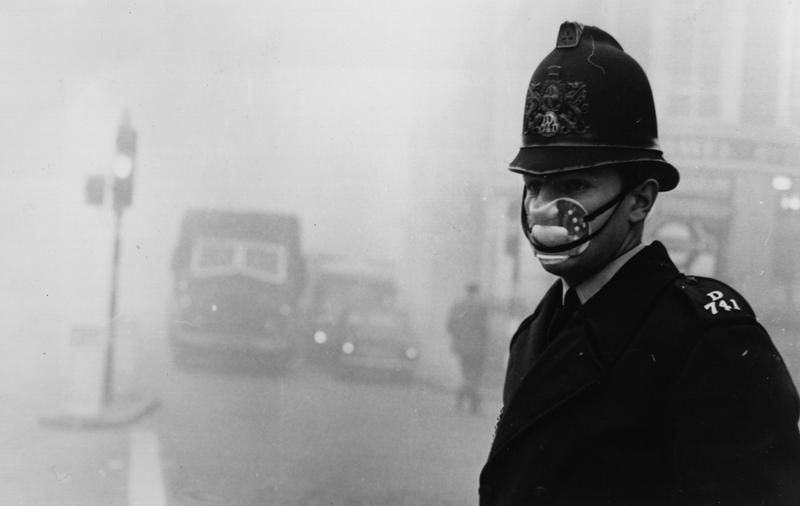Deadly Fog Kills Thousands of Londoners
By | August 3, 2018

Londoners are no strangers to fog. But in 1952, the perfect storm of weather, industrial airborne pollutants, and geography created a fog, or smog event, that choked the lives out of as many as 6,000 people and sickened 100,000 more. The Great Smog of London, as it became known, ranks as one of the worst air pollution disasters in history and led to legislative changes.

How Did Fog Kill So Many People?
The Great Smog of London wasn’t an ordinary, pea-soup fog that Londoners frequently experience. It was a smog, a mixture of fog and smoke. London was in a full-fledged industrial mode in the 1950s and much of the industry was powered by coal. Plus, the Great Smog happened in December and the brutal cold meant that nearly every household in London was burning coal in their furnaces. That caused a lot of smoke to fill the air above the city.
Following World War II, most of the coal used in London was a poorer quality, domestic coal that, when burned, released more sulfur dioxide in the smoke. Experts point to at least one of the numerous coal-fueled power stations in the area, Battersea, as possibly contributing to the increase in sulfur dioxide. The power station had recently installed a system that was designed to reduce the soot, but it resulted in more smoke output.
The Great Smog only lasted a few days. As soon as weather patterns changed, the fog naturally dissipated.

What Made the 1952 Fog Bad?
Fog happens all the time in London, but they usually dissipate rather quickly. The 1952 Great Smog event was different. On December 4, 1952, an anticyclone weather pattern set up over the city, essentially trapping all the smoke and fog and forcing it toward the ground. The result was a thick, toxic blanket of smog that impeded visibility. The smog took on a yellowish color as more and more sulfur dioxide was pumped into the air.
There was no widespread panic in the streets when the Great Smog descended on the city, and even during the smog event. Londoners are hearty folks and they don’t let a little fog slow them down. At first, most assumed this was a typical fog and they went about their normal activities. But the smoke and fog grew thicker throughout the day, forcing a halt to the public transportation system and automobile travel. Even the ambulances stopped running.

Thousands Fall Ill
Soon, people had trouble breathing in the thick smog. Especially vulnerable were the elderly, the young, and people with chronic respiratory problems. More and more people began showing up at the hospitals. It is estimated that between 4,000 and 6,000 Londoners perished during the smog event. Another 100,000 fell ill to the toxic fog. Death rates remained high in the months following the Great Smog and have been blamed for an additional 6,000 deaths. The official causes of death ranged from severe asthma attacks to respiratory tract infection to pneumonia and bronchitis. Other patients suffered from hypoxia, in which the air passages become blocked by an over-production of pus and mucus. Additional deaths were blamed on influenza.

Is Another Killer Fog on the Horizon?
When the number of deaths attributed to the Great Smog became known, it sparked a new-found awareness about the dangers of pollution. Lawmakers took steps to make sure this level of pollution-related deaths never occurs again. The City of London Various Powers Act of 1954 and the Clean Air Acts of 1956 and 1968 all forced Londoners to rethink old, destructive habits. Coal furnaces were replaced with gas-powered ones. London cannot change its susceptibility to fog, but it can prevent the addition of toxic smoke for merging with the fog to create smog.

